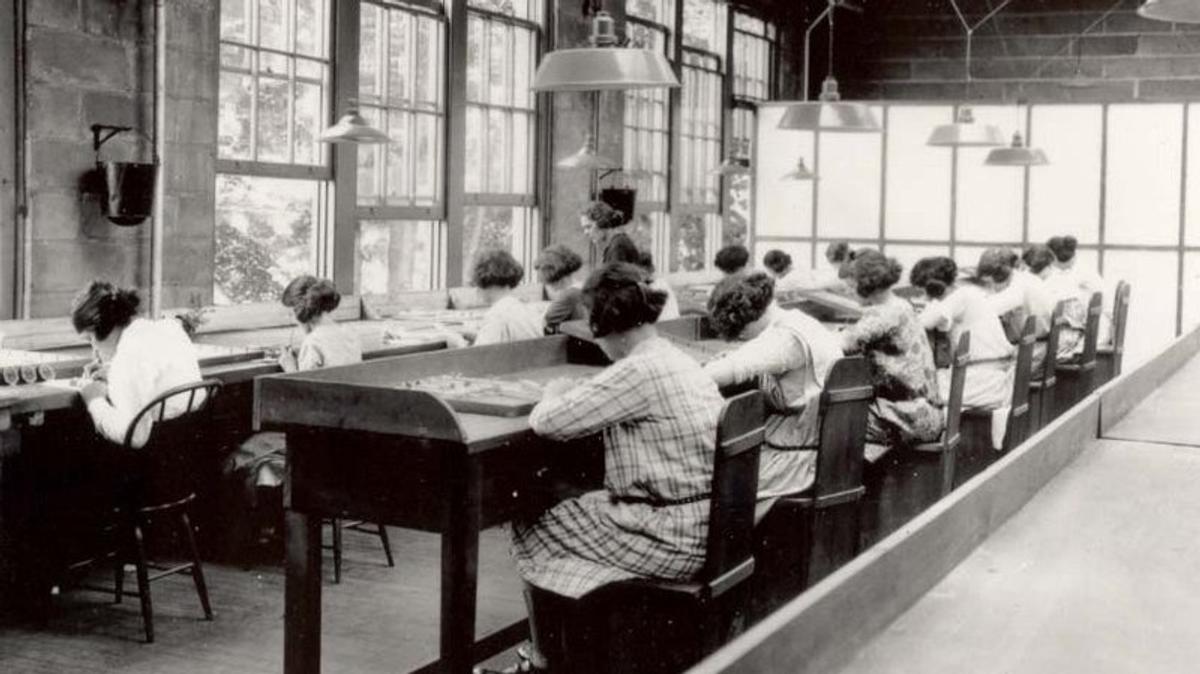QHTA History Writing Competition

Congratulations to our recipients in the QHTA History Writing Competition. Elizabeth Johnston and Amisha Maconochie in year 12 received ‘highly commended awards’ in the Year 12 Modern History section and Charlie Battisti earned 2nd Place in the Year 9 History section.
Charlie’s prize-winning entry is published below:
Radium Girls
By Charlie Battisti
Research question:
How did the Radium Girl’s hazardous working conditions in the United States catalyse workplace changes in the 20th century and influence the advancement of labour rights?
The ‘Radium Girls’ was the name given to female workers in U.S. radium factories during the early 1900s. The adversity experienced by the Radium Girls was instrumental in transforming workplace reforms throughout the 20th century, ultimately playing a significant role in the development of labour rights in the United States. This transformation is attributed to the hazardous working conditions and the developments in industry legislation.
Radium’s discovery in 1898 captivated the United States as their society incorporated the element into products such as watch paints, beauty products, aircrafts dials, and clocks due to its captivating self-luminosity (Health Effects of Radium Radiation Exposure, 2023). Consequently, this new societal demand for radium products required a surge in employment, but radium factories had mysteriously high mortality rates. During the 1900’s, working conditions for Americans were marked by discomfort and indignity, exacerbated by lenient safety regulations that tolerated hazardous environments (America at Work, America at Leisure: Motion Pictures from 1894-1915 | Digital Collections | Library of Congress, n.d.). Subsequently, factory owners predominantly neglected the health epidemic in radium factories, until the Radium Girls – the women who operated in radium factory – linked these high mortality rates to radium. In 1927, the five remaining Radium Girls filed a lawsuit against the industrial radium facilities, causing a societal outage and broader shift towards recognising the inherent dignity and rights of workers (Bryan-Quamina, 2023).
According to a scholarly article published by Harvard, Arthur Roeder, owner of an American luminescent watch dial manufacturing factory, commissioned hygiene specialist Cecil Drinker to investigate the surge in mortality rates within the factory. Drinker’s investigation unveiled that, “The factory was saturated with radium-contaminated dust—and no steps had been taken to protect the workers from radioactive material” (Roeder, 2013). Nevertheless, when Drinker conveyed this critical health hazard to Roeder, he insisted that the attribute of this issue was “a contagious infection contracted outside the factory” (Roeder, 2013), thereby dismissing the explained radiation-related hazards. This secondary source is very useful in demonstrating the hazardous working conditions endured by the Radium Girls, reflecting the recurring patterns of corporate negligence and disregard towards employee welfare. Furthermore, Roeder’s ignorance and denial regarding these lethal working environments directly contributed to the adversity faced by the Radium Girls. Subsequently, this highlighted the imperative necessity for labour protections and regulations aimed at compelling profit-driven owners - a predominant demographic of industrialists during the 1900’s - to accord significant priority for workplace safety. This scholarly article is highly reliable, primarily because it is published on the esteemed Harvard University website. Harvard University is widely renowned for its unwavering commitment to academic rigour and exceptionally high standards in research. The scholarly articles produced by Harvard typically undergo a rigorous peer reviewed process before publication. Therefore, this secondary source is substantially useful in demonstrating the hazardous conditions Radium Girls encountered.
According to the United States Bureau of Labour Statistics, during the 1900’s, American employees were confronted by a limited range of choices when encountering workplace hazards. Employees were compelled to either “assume the risk” and persist in their labouring or discontinue work altogether, rendering them “powerless to change the condition” (Boone, 2015). This reflected an era when worker’s rights and safety were often overshadowed by industrial demands. However, a notable transformation in labour rights occurred in 1970 when the Occupational Safety and Health Act (OSHA) was passed, “The OSHA general duty clause requires employers to keep workplaces “free from recognized hazards likely to cause death or serious physical injury” (Boone, 2015). This source is extremely useful as it outlines the developments in industry legislation, which were catalysed by the Radium Girls’ ordeal of surge in mortality rates serving as a reminder of the human cost of inadequate workplace conditions.
In addition, these legal developments marked a substantial shift in labour rights in the United States due to the OSHA clause, placing legal responsibility on employers to prioritise workers welfare and reduce workplace hazards. In addition, the oversight and regulation of OSHA represents a major transformation in the approach to ensure workers safety, shifting the focus from profit-seeking to the protection of employees lives and wellbeing. The legal dispute fought by the Radium Girls initiating these legal reforms and regulations throughout the nation, laying the foundation for stricter occupational health and safety regulations. Thus, their dispute was pivotal to reshaping labour rights and workplace reforms throughout the 20th century. This article, created by the United States government in 2015, is extremely reliable due to its publication on an official government website. In academic discussions, sources produced on government websites hold significant credibility as these articles are typically subjected to editorial and peer review processes. Moreover, this source has several additionally cited references illustrating that proper research has been completed while constructing this article. It serves a useful account of the developments in labour laws in the United States from 1915-2015.
Both sources examine the adverse working conditions endured by the Radium Girls. The scholarly article attests the Radium Girls predicaments, emphasising the reoccurring pattern of corporate negligence and disregard for employee welfare. Similarly, the United States Bureau of Labour Statistics portrays the era of workers’ rights and safety regularly dominated by industrial demands. Subsequently, both sources corroborate the depiction of perilous working conditions that workers had to navigate. However, the articles differ in their emphasis and focus; the scholarly article published by Harvard explores the working conditions of the Radium Girls, revealing the need for labour protections. In contrast, the United States Bureau of Labour Statistics article provides a broader historical context of the systemic transformation of labour rights brought about by legislative reforms.
The Radium Girl’s health epidemic in the United States catalysed legal developments in workplace safety and welfare of workers during the 20th century. Thus, the legal dispute fought by the Radium Girls was instrumental in the transformation of legal reforms and regulations throughout the United States and laid the foundation for stricter occupational health and safety regulations throughout the 20th century.
Reference List:
America at Work, America at Leisure: Motion Pictures from 1894-1915 | Digital Collections | Library of Congress. (n.d.). Library of Congress, Washington, D.C. 20540 USA. https://www.loc.gov/collections/america-at-work-and-leisure-1894-to-1915/about-this-collection/
Boone, G. (2015). Labor law highlights, 1915–2015. Monthly Labor Review. https://doi.org/10.21916/mlr.2015.38
Bryan-Quamina, G. (2023, April 11). The Radium Girls. Science Museum Group. https://www.sciencemuseumgroup.org.uk/blog/the-radium-girls/#:~:text=It%20had%20taken%20them%20two
Health effects of Radium radiation exposure . (2023). Mass.gov; Massachusetts Government. https://www.mass.gov/info-details/health-effects-of-radium-radiation-exposure
Roeder, A. (2013, October 24). Deadly occupation, forged report. Harvard T.H. Chan. https://www.hsph.harvard.edu/news/magazine/centennial-radium-forged-report/




